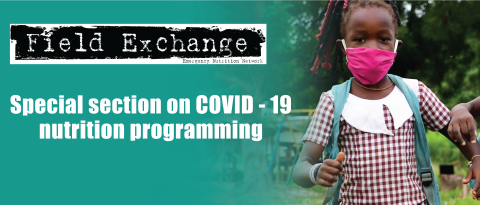Nutrition-sensitive WASH programming to improve the nutritional status of women and children in Nepal
By Keshab Shrestha, Dhruba Dhital, Yubraj Shrestha, Dipak Raj Sharma and Dr Kenda Cunningham
Keshab Shrestha is water, sanitation and hygiene (WASH) Manager for the Suaahara II programme, Environment and Public Health Organization.
Dhruba Dhital is Division Chief, Ministry of Physical Infrastructure, Water Supply and Sanitation Division, Lumbini Province, Nepal.
Yubraj Shrestha is Senior Planning Monitoring and Evaluation Officer, WASH, Suaahara II programme, Environment and Public Health Organization.
Dipak Raj Sharma is Private Partnerships and Digital Promotion Manager, Suaahara II programme, Helen Keller International.
Dr Kenda Cunningham is Senior Technical Advisor for Integrated Nutrition and Monitoring, Evaluation and Research, Suaahara II programme, Helen Keller International.
The authors acknowledge the United States Agency for International Development (USAID) for providing support to prepare this manuscript. This publication was prepared using the programme approach, strategies and data for Suaahara II. The contents of this publication are the sole responsibility of the authors and do not necessarily reflect the views of USAID or the United States Government.
Location: Nepal
What we know: Despite plausible linkages between malnutrition and poor water, hygiene and sanitation (WASH) practices and facilities, there is scant documentation to date on the integration of nutrition and WASH programming.
What this article adds: A multi-sector approach is being used by the Suaahara II programme to reduce undernutrition in 42 of Nepal’s 77 districts. In line with government priorities to become open defecation free and achieve total sanitation, WASH actions were integrated across Suaahara II districts to develop a conducive environment for improved WASH through the coordination and capacity building of local government stakeholders, better demand and awareness creation for improved WASH facilities and behaviours among households and engagement with private sector actors to strengthen WASH supply chains. Suaahara II prioritises hand washing with soap and water at critical times and the treatment of drinking water which are promoted through multiple behaviour change communication activities. In addition, among the total of 3,353 wards where Suaahara II implements activities, 500 very poor wards were targeted with a package of more intensive WASH-related activities prioritising six WASH behaviours (regular use and cleanliness of toilet, hand washing with soap and water, safe drinking water, menstrual hygiene, food hygiene and peri-home cleanliness). Monitoring data shows the uptake of some promoted WASH behaviours in non-intensive and intensive WASH areas with a greater change over time in intensive areas. Key learnings from the programme include the need to address multiple barriers to behaviour change, to have a multi-level approach, to closely monitor critical indicators and to involve the private sector to address supply barriers.
Background
Nutrition and WASH situation in Nepal
The prevalence of stunting and underweight among children under five years of age have markedly decreased in Nepal over the last 20 years from 57% to 36% and 42% to 27% respectively (MoH Nepal, 2017). Nepal has also made tremendous progress on several key water, sanitation and hygiene (WASH) indicators: basic drinking water services now reach 95% of households and basic sanitation services reach 79% of households (MICS, 2019). However, further improvements are needed. Child undernutrition continues to be a major public health burden and the prevalence of households consuming safe drinking water, hand washing with soap and water at all key times and engaging in other ideal WASH practices remains low. Almost 20% of households do not have a fixed place for hand washing and only 47% of households use soap and water for hand washing (MoH Nepal, 2017). Poor WASH facilities and practices contribute to sickness and malnutrition; for instance, in a given two-week period, nearly 8% of children under five years of age have diarrhoea (MoH Nepal, 2017).
Although it is well-known that poor WASH practices and facilities are key drivers for diarrhoeal diseases and associated with environmental enteropathy both of which inhibit the absorption and use of calories and nutrients, studies to date including several well-documented trials have shown mixed results of the effect of WASH programming on nutritional status. This is partly because, as trial authors have noted, community coverage of improved sanitation is crucial in addition to household-level behaviours (Pickering et al, 2019). Implementing programmes across levels (household and community) and across sectors (WASH and nutrition), however, remains challenging. For instance, integrated programmes that aim to share new information and change behaviours across multiple sectors can put increased pressure on staffing, budgets and the focus and time of both frontline workers and households. Furthermore, unless WASH or nutrition indicators are included in project objectives, there is little incentive to work towards an integrated goal (Teague et al, 2014).
Government multi-sector approach
The Government of Nepal (GoN) has prioritised a multi-sector approach to improve the population’s nutritional wellbeing. Both the Nepal Health Sector Strategy (2015-2020) and the Multi Sector Nutrition Plan (2012-2022) have emphasised the importance of collaboration with the WASH sector to promote hand washing with soap at critical times, safe drinking water, open defecation free (ODF) communities and water safety plans. Development partners have also aligned with these priorities and multi-sector approaches.
Adoption of the community-led total sanitation (CLTS) approach in Nepal
There has been a major focus in South Asia in recent years on communities becoming ODF primarily using the Community Led Total Sanitation (CLTS) approach. Rather than focus exclusively on toilet construction, the CLTS approach, now used in over 66 nations worldwide, aims to mobilise communities to eliminate open defecation by facilitating their own appraisal and analysis of the situation and taking their own actions to become ODF (Musembi, 2016). In an evaluation of India’s Total Sanitation Campaign, Spears (2012) found that as the programme intensified, infant mortality reduced, eliminating an estimated one-fifth of infant deaths and increasing child height by an estimated 0.2 standard deviations which is similar to the impact of doubling household food consumption per capita.
Following the formulation of the Sanitation and Hygiene Master Plan 2011 in Nepal, within which CLTS principles were central, the adoption of the approach was accelerated across the country. As a result, in 2019, Nepal became the first South Asian nation declared ODF. Nepal has since transitioned to a post-ODF approach focused on total sanitation initiatives. Nepal’s 2017 Total Sanitation Guideline has multiple WASH indicators at the household, institutional, market and environmental levels in recognition of the need to streamline and ensure the efficacy of sanitation and hygiene programming (GoN, 2015a). The guideline is based on Nepal’s Sanitation and Hygiene Master Plan and was developed for use by government agencies, local bodies, development partners and other WASH stakeholders to aid implementation. Scale-up has been facilitated by the Department of Water Supply and Sewerage Management with budgets and staffing allocated at local government level. This article describes the experiences of integrating WASH programming using a total sanitation approach into a large-scale multi-sector nutrition programme in Nepal in line with government priorities.
Suaahara II integrated nutrition and WASH programming
The Suaahara II programme is a five-year integrated nutrition programme funded by the United States Agency for International Development covering all communities of 42 of Nepal’s 77 districts which began in April 2016 as a continuation of the Suaahara programme. Helen Keller International is the lead partner for the programme which is implemented through a consortium with six other organisations. The aim of the programme is to reduce widespread undernutrition in Nepal, particularly among mothers and children within the first 1,000 days of life, with interventions spanning nutrition, health and family planning,1 WASH, agriculture and markets and nutrition governance.
The integrated WASH component of Suaahara II initially focused on ODF, in alignment with national priorities and policies, gradually transitioning to a focus on total sanitation initiatives. The focus of WASH programming in Suaahara II programme areas is now to develop a conducive environment for total sanitation at the local level through the coordination and capacity building of local government stakeholders, by creating demand and awareness at the household level to improve WASH facilities and behaviours and by strengthening WASH supply chains through engagement with private sector actors. Figure 1 illustrates the key components of the Suaahara II total sanitation programme.
Figure 1: Key components of the Suaahara II total sanitation programme
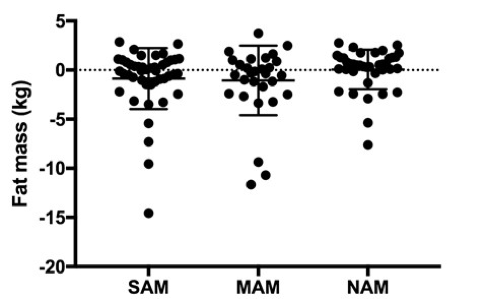
Development of a conducive environment
Suaahara II works with all levels of government – federal, provincial, municipal and ward – to provide technical assistance for the development of policies and plans, to implement nutrition-relevant WASH interventions and to advocate for the allocation of resources. To support this, the Suaahara II team has provided support to reactivate, and form where not available, WASH Coordination Committees, particularly at municipal level, and to link these with Nutrition and Food Security Steering Committees to support cross-sectoral collaboration for nutrition. Suaahara II has also facilitated meetings and led trainings to build the capacity of committee members around WASH programming at provincial and municipal levels.
In Nepal, nutrition-specific interventions are delivered through the health system. To support total sanitation, WASH messages have been included in training modules for health workers in health facilities and within the maternal, infant and young child nutrition (MIYCN) training for Nepal’s female community health volunteers (FCHVs). The purpose of this has been to ensure that frontline health workers reach households with the same messages relating to WASH as well as to maximise contact with individuals at household level. In order to effectively address deficient WASH services in healthcare facilities, Suaahara II has integrated WASH into the follow-up support provided to health facilities by Suaahara II including technical support to improve WASH facilities and services. Furthermore, FCHVs have been provided with on-site coaching and mentoring support to improve their skills and to ensure that they provide WASH and MIYCN counselling to 1000-days family members through different health platforms.
Household- and community-level interventions
At household level, Suaahara II prioritises two WASH behaviours across its entire programme: hand washing with soap and water at critical times and the treatment of drinking water. Suaahara II staff employed by local partner organisations in each of the 42 districts implement activities including multiple types of social and behaviour change approaches targeted to households in the 1000-day period (conception until a child reaches two years of age), sharing information and promoting ideal practices spanning health, nutrition, WASH and agriculture. Key behaviour change platforms include home visits, community platforms including monthly health mothers’ group meeting discussions, mass media including use of the Bhanchhin Aama radio programme and, more recently, text messages and social media (YouTube and Facebook). Following a campaign by Suaahara II to sensitise community members on the importance of toilet use and ODF status, 11,336 households invested in constructing their own toilets across 35 wards in nine districts.
Suaahara II has a Core+ package of activities which are additional interventions implemented in disadvantaged communities with the aim of closing equity gaps. As part of this package, intensive WASH activities were implemented in programme years one and two. Starting in programme year three, due to resource limitations and a desire to provide higher-quality services for the neediest communities, WASH intensive interventions were focused on selected Core+ areas, identified as the ‘poorest of the poor’. In this programme, Suaahara II has supported and implemented the intensive WASH total sanitation package in around 500 of its 3,353 programme wards across 42 districts, delivered through an approach known as the healthy home campaign.
The healthy home campaign includes 22 indicators relating to six different WASH behaviours: regular use and cleanliness of toilet, hand washing with soap and water, safe drinking water, menstrual hygiene, food hygiene and peri-home cleanliness. Suaahara II hired additional WASH-specific frontline workers to implement this more intensive WASH package. Along with Suaahara II’s other cadres of frontline workers, these staff participated in health mothers’ group meetings and other relevant community platforms to spread awareness of the behaviours represented in the 22 indicators. Orientation and sensitisation events were also held in community groups such as water users groups, forest users groups and homestead food production beneficiaries groups. A monitoring checklist was placed in each household to aid regular monitoring and counselling by frontline workers during home visits. Monitoring was carried out jointly by Suaahara II frontline workers, community leaders and local health workers to increase ownership of the campaign and help to facilitate community participation in the changes made. A comparison between WASH activities in intensive and non-intensive communities is provided in Table 1.
Suaahara II uses the WASH intensive wards to demonstrate what is possible and to advocate with the GoN for replication of these efforts in more communities of Nepal. Many municipalities have now, for example, taken ownership of the total sanitation campaign and replicated it in other wards with their own human and financial resources.
Table 1: Intervention packages on WASH in intensive and non-intensive WASH communities
|
Intervention packages intensive WASH communities |
Intervention packages in non-intensive WASH communities |
|
Promotion of six different WASH behaviours: regular use and cleanliness of toilet, hand washing with soap and water, safe drinking water, menstrual hygiene, food hygiene and peri-home cleanliness |
Promotion of two priority WASH behaviours: hand washing with soap and water and treatment of water before drinking |
|
Additional WASH specific frontline workers provided to each ward to support community interventions |
Field supervisors and community nutrition volunteers carry out community interventions |
|
Intensive activities carried out at local government units to attain ODF or total sanitation status. |
Provision of technical support to WASH coordination committees or local government for ODF or total sanitation status |
|
Intensive household monitoring and follow-up support visits carried out using devised health home checklists with 22 indicators related to six WASH behaviours |
|
|
Establishment of WASH marts to increase access to WASH materials in remote villages |
Establishment of WASH marts to increase access to WASH materials in remote villages |
|
Training of local tailors to produce reusable sanitary pads to increase access to menstrual hygiene products |
|
Private sector engagement to address supply side barriers
To complement demand side interventions, Suaahara II also works to address poor WASH product supply chains. Suaahara II works with private sector actors to increase access to water filters and other essential WASH commodities, particularly in remote communities, by supporting private sector actors to increase production of WASH products, overcome supply chain gaps and use social marketing to promote uptake of newly available products. To this end, Suaahara II has interacted with more than 10 local, national and multinational companies to explore the possibility of collaboration. Although many private sector actors showed interest, it has been difficult to find common benefits and interest. Many national and multinational companies already have their own programmes and local level private sector actors have limited human and financial resources to contribute. Many private companies mainly focus on urban populations whereas Suaahara II focuses on improving WASH supplies in remote areas. After much exploration, Suaahara II managed to successfully partner with BALTRA, a private multinational company, to increase their reach of water filters into remote communities. Suaahara II identified local shops to become ‘WASH marts’ of which now more than 850 exist across Suaahara II districts. This involves linking shop owners to BALTRA dealers to strengthen the supply chain of water filters and other essential WASH materials such as soap, buckets, jugs and toilet cleaning materials to improve household sanitation.
Suaahara II designed an instructional booklet and developed taglines and messages in Nepali for the promotion and marketing of BALTRA water filters to support this activity. Various communication materials were created with key messages around water filters including posters and stickers and large notice boards for streets, all of which identified the WASH marts so that households knew where they could purchase WASH materials.
Suaahara II has also supported the social marketing of bio-sand filters, produced by entrepreneurs in the terai (lowland plains), which can remove iron and arsenic from water. Additionally, 1,500 local tailors were trained to produce reusable cotton cloth menstrual pads and about 400 local masons to produce improved cook stoves with lower levels of smoke emission. Suaahara II also helped tailors to brand the new reusable sanitary pads as “Sangi Pad” and produced and distributed related posters for social marketing. Priority was given to remote areas where these WASH commodities and services are not available or affordable.
Early results and lessons learned
Data is not yet available to show the impact of Suaahara II interventions on WASH outcomes or to link WASH interventions with health and nutrition outcomes. Monitoring data, however, reveals encouraging signs of increased participation in WASH-related activities over time. For example, Figure 2 demonstrates a large increase in 1,000 day mothers engaging in community events between 2017 and 2019, both in WASH intensive and non-intensive wards, with a particularly marked increase in WASH-intensive areas. This achievement highlights the benefit of increased programmatic investments and specifically that having more frontline workers facilitates greater intensity of exposure to interventions among target populations. Figures 3 and 4 show that these differences are also reflected in WASH behaviours which improved over time, particularly so in WASH intensive areas compared to WASH non-intensive areas. Qualitative data also shows early signs of the adoption of new behaviours and perceived positive results (Boxes 1 and 2). In time, programme evaluation will capture quantitative data on changes in WASH knowledge, attitudes and behaviours, as well as health and nutrition outcomes.
Figure 2: 1000-days mothers ever participating in Suaahara II community events
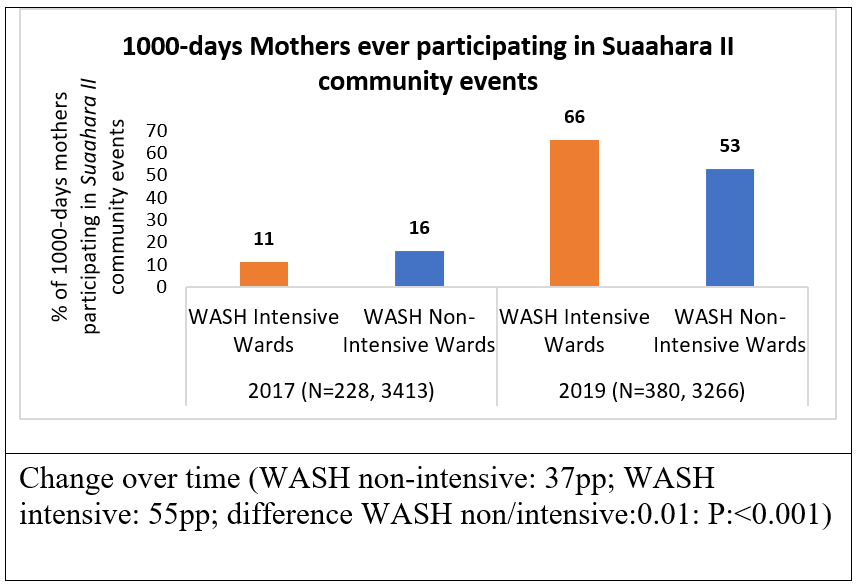
Figure 3: Households practicing correct use of drinking water treatment technologies
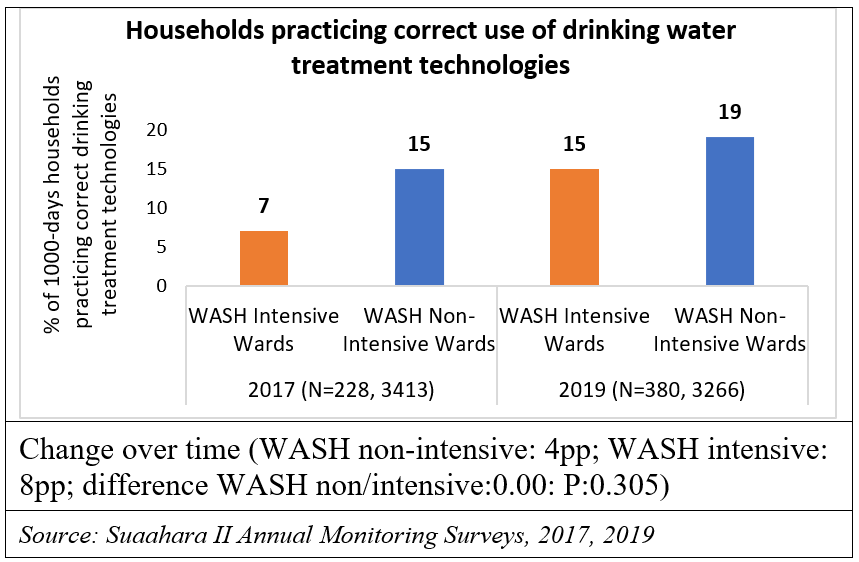
Figure 4: Households with soap and water at a handwashing station commonly used by family members
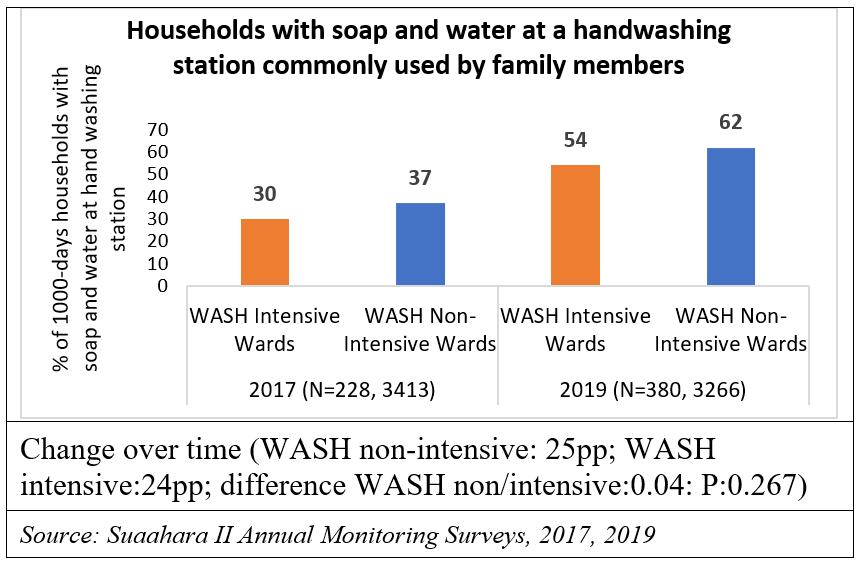
Box 1: Quote from a female community health volunteer on the reduction of diarrhoeal disease after healthy home campaign
Among various changes that the Total Sanitation campaign has brought about, one of them is reduction in the number of diarrhoeal diseases. Before the implementation of the programme, on average, 6-7 people used to come to me every month for ORS [oral rehydration solution]. But now the number has significantly dropped to 1-2 people per month. I think change in the behaviour of hand washing and drinking treated water are the two major reasons for which the trend of diarrhoeal disease has decreased. People have developed the practice of hand washing with soap and water at all critical times. Also all households either boil or filter water prior to drinking. With the gradual change in behaviour of community people, the number of cases of diarrhoeal diseases is decreasing.
Mrs. Urmila Lawati Chemjong
Female community health volunteer, Chilingdin, Panchthar
Box 2: Case story: Water filter at wholesale rate for 1000 days mothersMr. Keshabraj Belwase is an owner of a utensils shop, ‘Namuna Swochataa Pasal’, located in Banganga Municipality - 7 of Kapilvastu district where, supported by Suaahara II, he now sells WASH products including water filters at wholesale rate to 1,000 day mothers. Between July 2019 and January 2020, Keshabraj sold 100 water filters (35 to 1,000 day mothers). He has also now begun to sell toilet cleaning brushes, potty pans, buckets, cleaning liquid and other toiletries and sanitation materials to support positive WASH behaviours.
Keshabraj remarked, “I used to think only health professionals are responsible for betterment of public health. I never had a thought, I, as a local retailor can play a key supporting role to improve family health. Being a local retailor, I can earn profit from other products. Since, it is directly concerned with public health, I am selling the filters in wholesale rate for particular families. Because good deeds are always important for the well-being of community”.
Urmila Chaudhary, a 1,000 day mother from Banganga - 8 said, “We can get same filter in lesser price in Namuna Swochataa Pasal compared to other shops. It is also easier for us to buy filter there as it is located in the central market. I have bought one filter and have been drinking filter water since then. I am assured that my family are now safe from diarrheal diseases”.
Implementing this nutrition-sensitive WASH component in the Suaahara II programme has led to several important lessons learned. Firstly, improved knowledge and awareness alone often does not result in behaviour change. Systematic efforts are needed to identify and, in turn, address barriers to ideal behaviours including habits, socio-cultural stigma and access to and the affordability of WASH materials and infrastructure. For example, many rural communities lack basic WASH infrastructures such as tap water supply, hand washing stations, chicken coops and animal sheds without which improving WASH and nutrition behaviours are very difficult. Behaviour change therefore requires a more holistic, multi-level approach. In a large, multi-sector programme, identifying and addressing barriers that are different for each behaviour and vary across communities is an immense challenge. In the context of this programme, this required training nearly 40 sub-partner organisations and nearly 2,000 staff to implement activities to improve behaviours across between five and 10 sectors each with between five and 20 behaviours and each with multiple and sometimes conflicting determinants. While the multi-sector nature of large scale programmes like this are key to achieving high impact, their nature magnifies the complexity of truly addressing all key barriers for all key behaviours.
Secondly, developing indicators related to the desired behaviours is necessary to generate programmatic focus on critical WASH behaviours and devoting the necessary time and continuous action. While the list of indicators was long (22), investment was made in various health cadres to enable their implementation. This took initial training, continuous monitoring and follow-up and the involvement of local government to ensure ownership of the campaign. The list of indicators also set a helpful benchmark to households and motivated them to strive towards achieving them which supported behaviour change.
Another important learning is that it is vital that local governments take the lead for nutrition-sensitive WASH programmes to ensure ownership and sustainability. Their replication of and scaling-up of Suaahara II activities requires building skills and networks for better collaboration between actors in the WASH and health sectors. For sustainability of the programme, Suaahara II has been advocating with the local governments and providing technical support, particularly during their annual planning and budgeting, for nutrition-sensitive WASH investments. Some municipalities have already internalised, replicated and scaled up the healthy home campaign, for instance, integrating the Suaahara II approach. As can be clearly seen in the early results, the WASH-intensive package achieved higher community engagement and behaviour change than the non-intensive package. The adoption of this kind of programme into the government system will require support to local government during annual planning and budgeting, as well as targets set at national level for total sanitation to drive local government. National government should replicate the intensive drive for ODF nationwide, putting similar focus and efforts behind a drive for total sanitation.
Finally, private sector actors are important stakeholders for improving WASH behaviours as they can address supply side barriers. It takes time and compromise, however, to ensure that goals converge and interests align between development objectives and private sector actors. The partnership with BALTRA presented challenges including staff turnover in key positions within the company, a lack of a common understanding for collaboration between BALTRA dealers and Suaahara II field staff and physical challenges to reach geographically remote areas by the dealers. Increased demand for WASH commodities created by development programmes in remote rural areas will facilitate an increased interest by private sector actors to expand their services into these areas in spite of their geographical remoteness. Increased demand and supply must go hand in hand.
Conclusion
Suaahara II integrated WASH activities into its multi-sector nutrition programme prioritising two WASH behaviours, hand washing and drinking water treatment across its entire programme and promoting additional WASH behaviours in WASH-intensive areas. Developing a conducive environment through capacity building and technical assistance for government actors and engagement with the private sector to address supply side barriers were an integral part of this programme. These integrated and intensive programming efforts have shown promising results in the uptake of WASH practices but more evidence on the effectiveness of this approach will emerge from a forthcoming programme-wide evaluation. Scaling up evidence-based, nutrition- sensitive WASH interventions to improve WASH and nutrition indicators requires advocacy and collaboration with government actors at every level. Suaahara II will continue to lobby and advocate for the healthy home campaign to improve WASH behaviours in Nepal.
For more information, please contact Keshab Shrestha at keshab.shrestha@enpho.org
1 https://www.ennonline.net/fex/64/familyplanningnutritionnepal
References
Clasen, T, Boisson, S, Routray P, et al (2014) Effectiveness of a rural sanitation programme on diarrhoea, soil-transmitted helminth infection, and child malnutrition in Odisha, India: a cluster-randomised trial. Lancet Glob Health. 2014;2(11):e645-e653. doi:10.1016/S2214-109X(14)70307-9
Spears, D ( 2012) "How much international variation in child height can sanitation explain?," Working Papers 1436, Princeton University, Woodrow Wilson School of Public and International Affairs, Research Program in Development Studies.
Government of Nepal, National Planning Commission (2012) Multi-sectoral Nutrition Plan: For accelerating the reduction of maternal and child under-nutrition in Nepal.
Government of Nepal (2015) Nepal Water Supply, Sanitation and Hygiene Sector Development Plan (2016-2030). Ministry of Water Supply and Sanitation. Sector Efficiency Improvement Unit.
Ministry of Health, Nepal; New ERA; and ICF (2017) Nepal Demographic and Health Survey 2016. Kathmandu, Nepal: Ministry of Health, Nepal.
MICS (2019) Nepal Multiple Indicator Cluster Survey, Monitoring the situation of children and women, Central Bureau of Statistics, National Planning Commission, Government of Nepal.
National Planning Commission, 2018. Multi-sectoral Nutrition Plan II (2018-2022), Kathmandu, Nepal.
Ministry of Water Supply and Sanitation (MWSS) (2016) Water, Sanitation and Hygiene
(WASH) Sector status report 2016. Sector Efficiency Improvement Unit, Ministry of
Water Supply and Sanitation, Kathmandu
Musembi, C and Musyoki, S (2016) ‘CLTS and the Right to Sanitation’, Frontiers of CLTS issue 8, Brighton: IDS
Pickering, A et al (2019) The WASH Benefits and SHINE trials: interpretation of WASH
intervention effects on linear growth and diarrhoea. Lancet Glob Health 2019;7: e1139–46
DOI:https://doi.org/10.1016/S2214-109X(19)30268-2
Teague, J et al. (2014) Water, sanitation, hygiene, and nutrition: successes, challenges, and implications for integration. International Journal of Public Health. DOI: 10.1007/s00038-014-0580-8.


